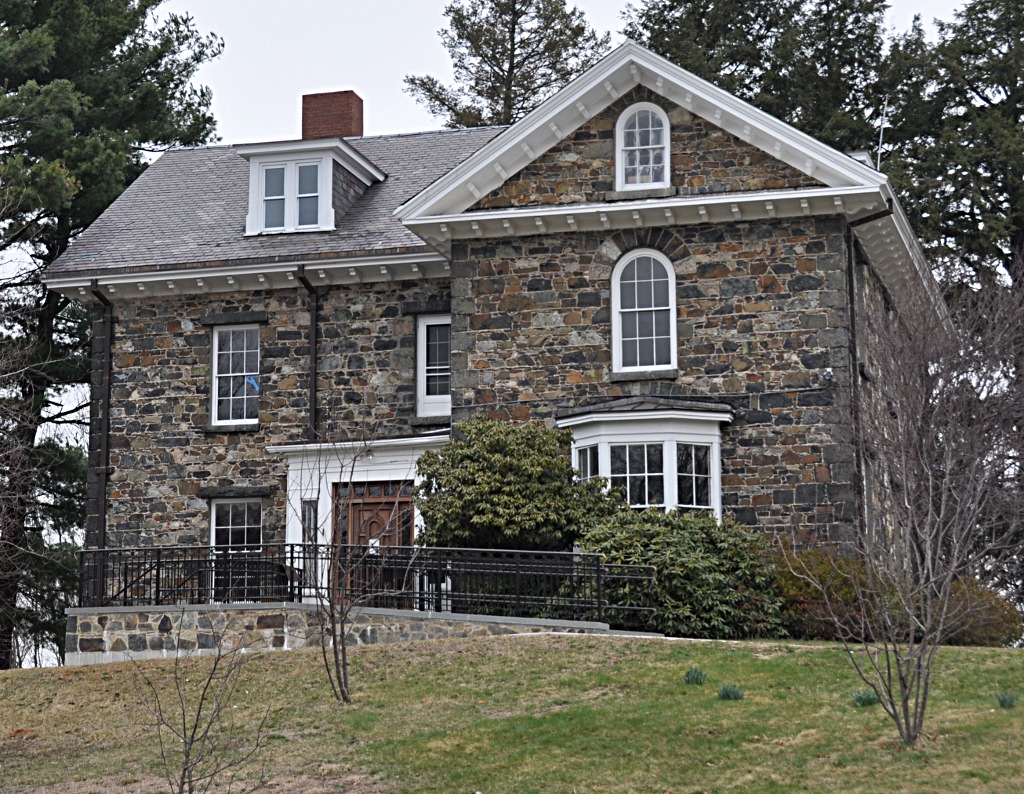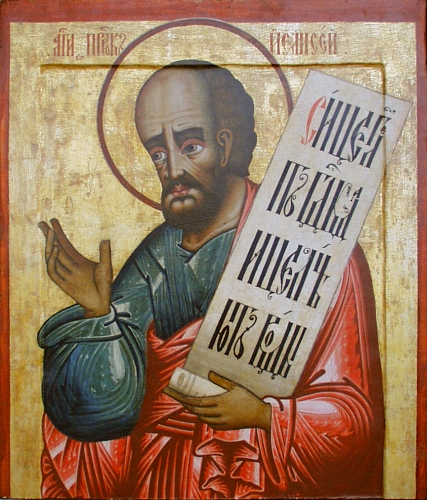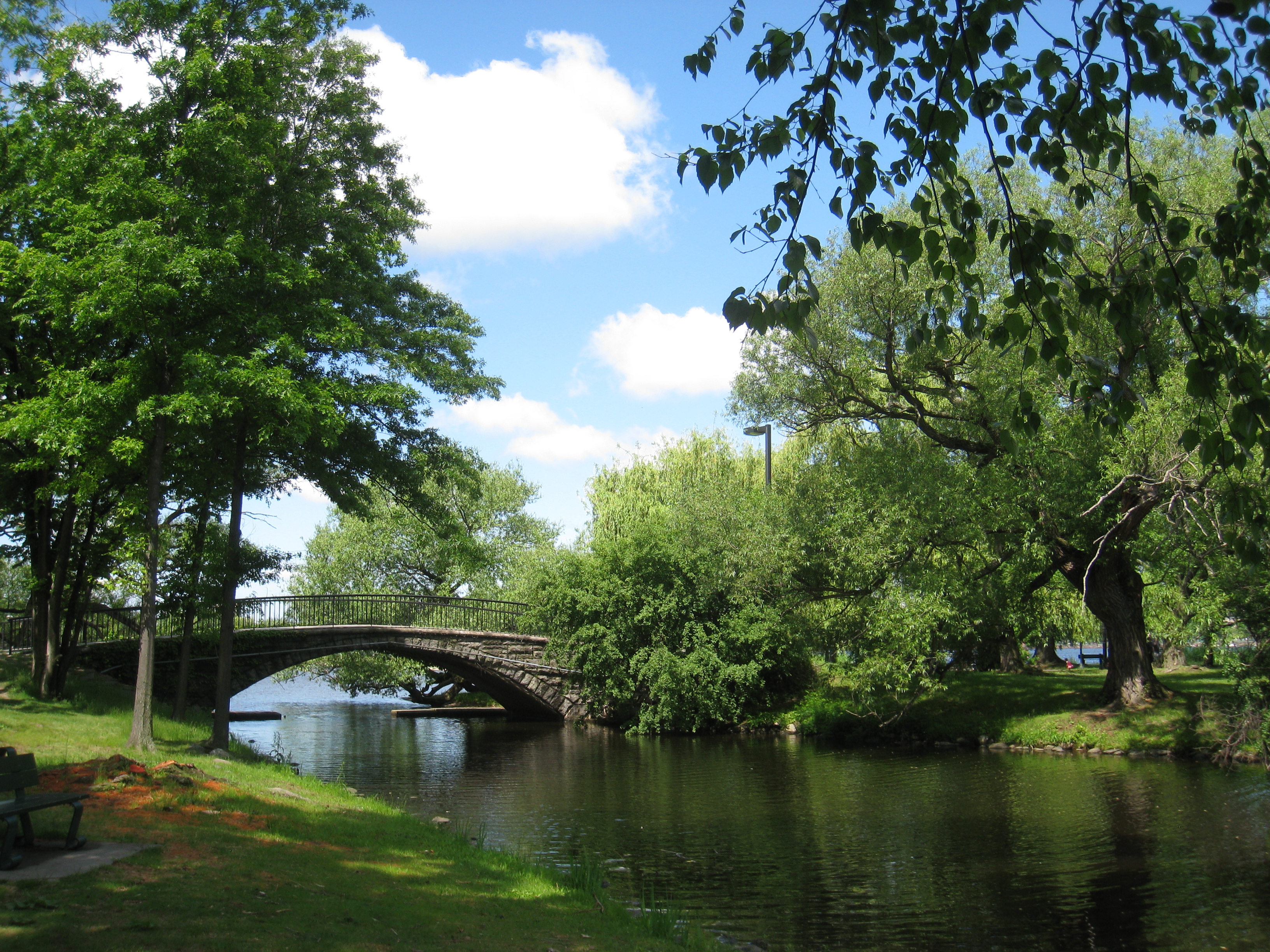|
Haywardville
In the early 1800s, Nathaniel Hayward bought remodeled shoe mills in Stoneham, Massachusetts from Elisha Converse, founder of the largest rubber shoe manufacturer in the world, the Boston Rubber Shoe Company in Malden, Massachusetts. Straddling Spot Pond Brook, the village was the site of early industrial development which later blossomed into larger factories. The factory grew to be an industrial community that has come to be known as Haywardville. It is here where Hayward and Charles Goodyear invented slickers (canvas and rubber coats) and the process of vulcanization. The factory produced a variety of rubber products including boots, pails and spittoons. There were numerous large factory buildings here during this period, a community of living quarters, some shops - or at least places to barter for goods. Decline Industry in Haywardville began to decline as larger, more successful businesses overshadowed those in the village. It is believed that at least four mills were usin ... [...More Info...] [...Related Items...] OR: [Wikipedia] [Google] [Baidu] |
Spot Pond Archeological District
The Spot Pond Archeological District is a historic archaeological site near Spot Pond in Stoneham, Massachusetts. It is located in the Virginia Woods section of the Middlesex Fells Reservation, a state park. The district encompasses sites along Spot Pond Brook that were mill sites dating from the 17th to the 19th centuries. At its height, in the mid-19th century the Hayward Rubber Works was located in the area, giving it the name "Haywardville". One of the park's trails runs through the area, and a park pamphlet provide a self-guided tour joining the major remnants of the industries that once flourished there. The district was added to the National Register of Historic Places in 1992. External links ''Industrial Eden: The Legacy of Haywardville''''Haywardville Historical Images'' See also *National Register of Historic Places listings in Stoneham, Massachusetts *National Register of Historic Places listings in Middlesex County, Massachusetts This is a listing of places ... [...More Info...] [...Related Items...] OR: [Wikipedia] [Google] [Baidu] |
Middlesex Fells Reservation
Middlesex Fells Reservation, often referred to simply as the Fells, is a public recreation area covering more than in Malden, Medford, Melrose, Stoneham, and Winchester, Massachusetts. The state park surrounds two inactive reservoirs, Spot Pond and the Fells Reservoir, and the three active reservoirs (North, Middle, and South) that are part of the water supply system for the town of Winchester. Spot Pond and the Fells Reservoir are part of the Wachusett water system, one of six primary water systems that feed metropolitan Boston's waterworks. The park is managed by the Massachusetts Department of Conservation and Recreation and is part of the Metropolitan Park System of Greater Boston. History The area around Middlesex Fells is known to have been explored by John Winthrop, Governor of the Massachusetts Bay Colony, in 1632. The reservation's lands have been used for the production of timber, granite, and ice. Abundant water power meant that many mills, including one that ma ... [...More Info...] [...Related Items...] OR: [Wikipedia] [Google] [Baidu] |
Nathaniel Hayward
Nathaniel Manley Hayward (January 19, 1808 – July 18, 1865) was a US businessman and inventor best known for selling a patent to Charles Goodyear that Goodyear later used to develop the process of vulcanization Biography Nathaniel Hayward was born in Easton, Massachusetts on January 19, 1808. Hayward met Goodyear in 1837 and shared with him the discovery he had made, almost accidentally, while working at a rubber factory in Roxbury, Connecticut. He bought some mills in Stoneham, Massachusetts, from Elisha S. Converse, which later became a small settlement called Haywardville. He died in Colchester, Connecticut on July 18, 1865. Hayward's former home in Colchester has been listed on the National Register of Historic Places The National Register of Historic Places (NRHP) is the United States federal government's official list of districts, sites, buildings, structures and objects deemed worthy of preservation for their historical significance or "great artistic ... [...More Info...] [...Related Items...] OR: [Wikipedia] [Google] [Baidu] |
Stoneham, Massachusetts
Stoneham ( ) is a town in Middlesex County, Massachusetts, nine miles (14.5 km) north of downtown Boston. Its population was 23,244 at the 2020 census. Its proximity to major highways and public transportation offer convenient access to Boston and the North Shore coastal region and beaches of Massachusetts. The town is the birthplace of the Olympic figure-skating medalist Nancy Kerrigan and is the location of the Stone Zoo. History The earliest documented mention of the territory now called Stoneham dates to 1632 when, on February 7, Governor Winthrop and his party came upon this area. They found Spot Pond and ate their lunch on a place they called Cheese Rock, now known as Bear Hill. Stoneham is situated on the traditional territory of the Massachusett and Pawtucket peoples. Stoneham was first settled by colonists in 1634 and was originally a part of Charlestown. In 1678, there were six colonists with their families, all in the northeast part of the town, probably b ... [...More Info...] [...Related Items...] OR: [Wikipedia] [Google] [Baidu] |
Elisha S
Elisha ( ; or "God is my salvation", Greek: , ''Elis îos'' or , ''Elisaié,'' Latin: ''Eliseus'') was, according to the Hebrew Bible, a prophet and a wonder-worker. His name is commonly transliterated into English as Elisha via Hebrew, Eliseus via Greek and Latin, or Alyasa via Arabic, and Elyasa or Elyesa via Turkish. Also mentioned in the New Testament and the Quran, Elisha is venerated as a prophet in Judaism, Christianity and Islam and writings of the Baháʼí Faith refer to him by name. Before he settled in Samaria, Elisha passed some time on Mount Carmel. He served from 892 until 832 BC as an advisor to the third through the eighth kings of Judah, holding the office of "prophet in Israel". He is called a patriot because of his help to soldiers and kings. In the biblical narrative, he is a disciple and protégé of Elijah, and after Elijah was taken up in a whirlwind, Elisha received a double portion of his power and he was accepted as the leader of the sons of th ... [...More Info...] [...Related Items...] OR: [Wikipedia] [Google] [Baidu] |
Raincoat
A raincoat is a waterproof or water-resistant garment worn on the upper body to shield the wearer from rain. The term rain jacket is sometimes used to refer to raincoats with long sleeves that are waist-length. A rain jacket may be combined with a pair of rain pants to make a rainsuit. Rain clothing may also be in one piece, like a boilersuit. Raincoats, like rain ponchos, offer the wearer hands-free protection from the rain and elements; unlike the umbrella. Modern raincoats are often constructed from waterproof fabrics that are breathable, such as Gore-Tex or Tyvek and DWR-coated nylon. These fabrics and membranes allow water vapor to pass through, allowing the garment to 'breathe' so that the sweat of the wearer can escape. The amount of pouring rain a raincoat can handle is sometimes measured in the unit millimeters, water gauge. Early History One of oldest examples of rainwear recorded is likely the woven grass cape/mat of Ötzi, around 3230 BCE. The Olmec Native America ... [...More Info...] [...Related Items...] OR: [Wikipedia] [Google] [Baidu] |
Vulcanization
Vulcanization (British: Vulcanisation) is a range of processes for hardening rubbers. The term originally referred exclusively to the treatment of natural rubber with sulfur, which remains the most common practice. It has also grown to include the hardening of other (synthetic) rubbers via various means. Examples include silicone rubber via room temperature vulcanizing and chloroprene rubber (neoprene) using metal oxides. Vulcanization can be defined as the curing of elastomers, with the terms 'vulcanization' and 'curing' sometimes used interchangeably in this context. It works by forming cross-links between sections of polymer chain which results in increased rigidity and durability, as well as other changes in the mechanical and electrical properties of the material. Vulcanization, in common with the curing of other thermosetting polymers, is generally irreversible. The word vulcanization is derived from Vulcan, the Roman god of fire and forge. History Rubber—latex� ... [...More Info...] [...Related Items...] OR: [Wikipedia] [Google] [Baidu] |
Water Resources Law
Water resources law (in some jurisdictions, shortened to "water law") is the field of law dealing with the ownership, control, and use of water as a resource. It is most closely related to property law, and is distinct from laws governing water quality. Waters subject to regulation Water is ubiquitous and does not respect political boundaries. Water resources laws may apply to any portion of the hydrosphere over which claims may be made to appropriate or maintain the water to serve some purpose. Such waters include, but are not limited to: * Surface waters—lakes, rivers, streams, oceans, and wetlands; * Surface runoff—generally water that flows across the land from rain, floodwaters, and snowmelt before those waters reach watercourses, lakes, wetlands, or oceans; *Groundwater—particularly water present in aquifers. History The history of people's relation to water illustrates varied approaches to the management of water resources. "Lipit Ishtar and Ur Nammu both c ... [...More Info...] [...Related Items...] OR: [Wikipedia] [Google] [Baidu] |
Charles Eliot (landscape Architect)
Charles Eliot (November 1, 1859 – March 25, 1897) was an American landscape architect. Known for pioneering principles of regional planning, naturalistic systems approach to landscape architecture, and laying the groundwork for conservancies across the world. Instrumental in the formation of The Trustees of Reservations, the world's first land trust, playing a central role in shaping the Boston Metropolitan Park System, designing a number of public and private landscapes, and wrote prolifically on a variety of topics. History Eliot was born in Cambridge, Massachusetts in 1859 to Charles W. Eliot and Ellen Derby Peabody. Charles had one brother, Samuel A. Eliot whom was a minister. His father became President of Harvard University in 1869, the same year his mother died. He was part of the prominent Eliot family originating from Boston. 1878 admitted to Harvard College. In 1880 Charles organized a group of college classmates, they would sail to Mount Desert Island, Main ... [...More Info...] [...Related Items...] OR: [Wikipedia] [Google] [Baidu] |
Frederick Law Olmsted, Jr
Frederick Law Olmsted Jr. (July 24, 1870 – December 25, 1957) was an American landscape architect and city planner known for his wildlife conservation efforts. He had a lifetime commitment to national parks, and worked on projects in Acadia, the Everglades and Yosemite National Park. He gained national recognition by filling in for his father on the Park Improvement Commission for the District of Columbia beginning in 1901, and by contributing to the famous McMillan Commission Plan for redesigning Washington according to a revised version of the original L’Enfant plan. Olmsted Point in Yosemite and Olmsted Island at Great Falls of the Potomac River in Maryland are named after him. The son of Frederick Law Olmsted Sr., he and his older half-brother John C. Olmsted created Olmsted Brothers about 1896 as a successor firm to their father's firm. They had both worked with him before his retirement. Soon after his father's death, Olmsted stopped using the suffix "Jr." Works att ... [...More Info...] [...Related Items...] OR: [Wikipedia] [Google] [Baidu] |
Metropolitan Park System Of Greater Boston
The Metropolitan Park System of Greater Boston is a system of reservations, parks, parkways and roads under the control of the Massachusetts Department of Conservation and Recreation (DCR) in and around Boston that has been in existence for over a century. The title is used by the DCR to describe the areas collectively: "As a whole, the Metropolitan Park System is currently eligible for listing on the National Register of Historic Places", as outlined on the department's website. The DCR maintains a separate Urban Parks and Recreation division to oversee the system, one of five such divisions within the department—DCR's Bureau of State Parks and Recreation manages the remainder of Massachusetts state parks. Direct design and maintenance functions for the parkways and roads within the system are provided by the DCR Bureau of Engineering. The park system consists of coastal reservations and beaches including Revere Beach, river reservations along the three major rivers in the area ... [...More Info...] [...Related Items...] OR: [Wikipedia] [Google] [Baidu] |
John Bottume House
The John Bottume House is a historic house at 4 Woodland Road in Stoneham, Massachusetts. Built c. 1849, this stone house was one of several built along the shore of Spot Pond by a Boston businessman as a retreat, and is the only one to survive. It is owned by the Massachusetts Department of Conservation and Recreation, and houses the visitors center for the Middlesex Fells Reservation. It was listed on the National Register of Historic Places in 1984. Description and history The Botume House is located in southern Stoneham, set on the eastern shore of Spot Pond, the largest body of water in the Middlesex Fells Reservation. It is a T-shaped stone structure, stories in height, built out of uncoursed granite stone. Its Italianate features in a bracketed roof line and gable ends, with round-arch windows at the gable ends. Its setting also has original landscaping elements, including a pair of entrance posts and a granite wall separating it from Woodland Road. The house was b ... [...More Info...] [...Related Items...] OR: [Wikipedia] [Google] [Baidu] |

.jpg)







